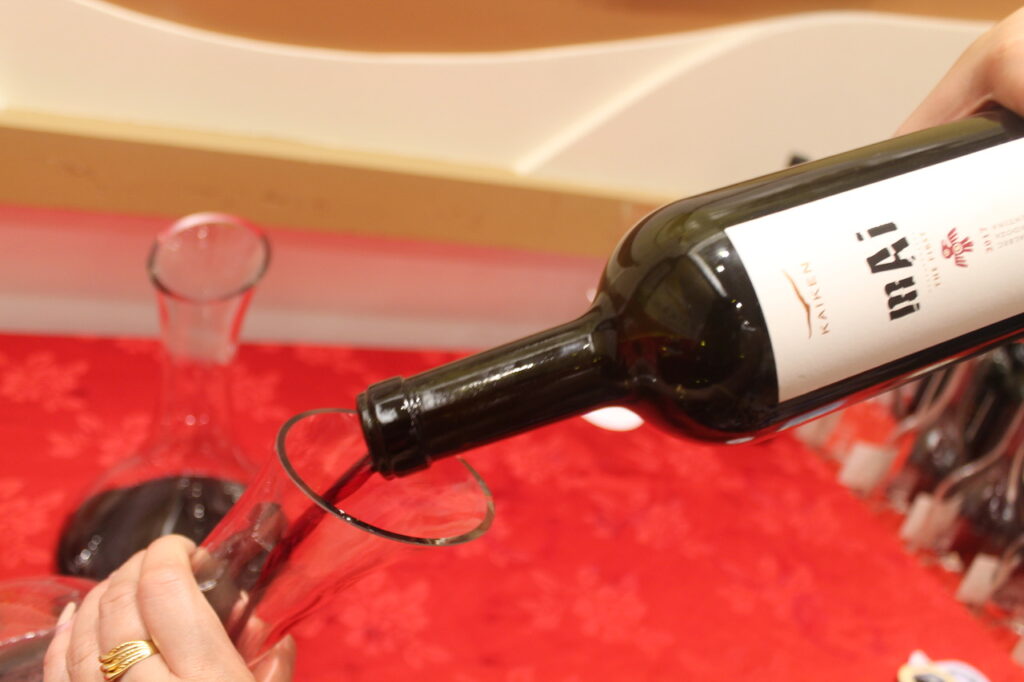It’s not a contest between old and new world wines, says Ronald Lim Joseph, but a matter of preference. Filipino palates, due to exposure and the availability of supply, gravitate more toward rich, robust-tasting wines that are hallmarks of wines produced by Montes and Kaiken from Chile and Argentina, respectively.
By Alex Y. Vergara
When it comes to wines, Filipinos have a so-called “new world palate.” They generally go for wines that taste “full, robust and rich,” wines produced in the “new world,” including such countries as Argentina and Chile, says wine expert Ronald Lim Joseph. Old world wines, on the other hand, generally tend to have lighter body, lower alcohol, higher acidity and less fruity flavor with more “minerality,” Ronald adds.

“The old world palate is a little bit more finesse, balanced and dry. It’s just a matter of preference, actually. Once you get accustomed to rich, robust-tasting wines, it’s what your palate tends to look for.”
Ronald, Philippine Wine Merchants (PWM) director of operations, recently hosted a wine-tasting dinner at the Century Seafood Restaurant, welcoming Juan Pablo Yañez, export manager (Southeast Asia) of Montes and Kaiken wines from Chile and Argentina, respectively. The event also doubled as a treat to PWM’s valued clients.
This time, Juan Pablo put the spotlight on Kaiken wines, especially Kaiken Rosé, Malbec and Aventura, which were individually paired with a multi-course Chinese dinner.
Kaiken, by the way, is a brand started by founder Aurelio Montes 20 years ago when he used to fly regularly across the Andes from Chile to neighboring Argentina. The name Kaiken, in fact, says Juan Pablo, is derived from a wild goose the flies across Patagonia, between Chile and Argentina.
“When Aurelio began conceptualizing Kaiken, he used to fly a lot between these two areas separated by the Andes. On the Argentinean side, we produce Kaiken [wines] and on the Chilean side, we produce Montes,” he explains.
Although separated by a mere mountain range, the two areas are worlds apart in terms of the types of wines they produce. And this could be explained by a number of factors lumped under the term “terroir,” which includes the soil and terrain or aspect, even the lifestyles and temperaments of the people who manage the place and make the wines.

“But in terms of philosophy, both wines—Montes and Kaiken—have the same goals. To produce premium wines that are aligned with our partners’ requirements and expectations,” says Juan Pablo.
Since it doesn’t rain often in Argentina and Chile, for example, winemakers in these places need to irrigate grapevines to produce anything substantial. In contrast, in the old world, chiefly France, Italy and Spain, they refrain from irrigating their fields.
“They make do with what they have and that’s a philosophy they have lived by for generations. In Chile and Argentina, we do things differently,” says Juan Pablo.
Adds Ronald: “This isn’t about old world versus new world because old world wines are the model. Philippine Wine Merchants carries the best wineries from the old and new worlds.”
“Argentina, where Malbec attained its fullest potentials, is also the new world home of Malbec,” he continues. Malbec, a variety of wine that originated in France, specifically in Cahors, has further thrived and became even more famous after it found a second home in Argentina.
The Montes and Kaiken family of wines is now present in a little over 100 markets. And Asia, which represents 60 percent of its sales, is its main market. And how does the Philippine figure in the equation?
Ronald believes that Filipinos, despite the relative absence of a wine-drinking culture in the country compared to, say, France, Italy and even Australia and the United States, are ready for premium and even ultra-premium wines from Kaiken and Montes.
At a dizzying price of P 5,000 per bottle, for instance, the Kaiken Malbec has found a substantial market in the Philippines, Ronald attests. “These types of wines can’t be readily produced. The supply is in the medium range. In other words, the quantity available for the rest of the world to savor is very small. In the end, it’s really about drinking less and drinking quality.”









